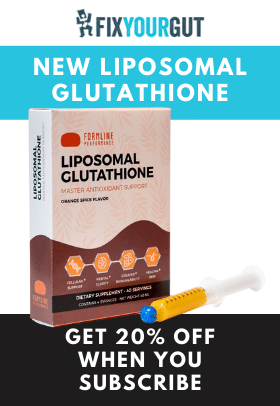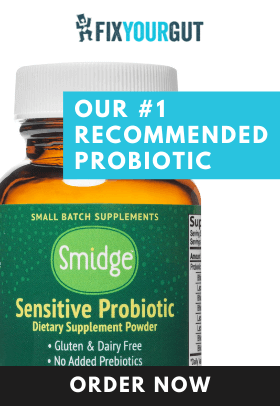Leaky gut has become a buzzword over the past few years, so much so that most gastroenterologists scoff when the word is uttered. Many blogs are released by mainstream sources attempting to debunk the “myth” of having a leaky gut. Many research studies prove that having a leaky gut is an actual medical condition known as inappropriately increased gut permeability. Our intestinal junctions are quite tight when they are healthy and, when signaled, only open to our bloodstream what our body needs to thrive. For example, we absorb nutrients, water, supplements, and medications through our intestinal lining. However, suppose our intestinal junctions open more extensively or more frequently than they should (inappropriately increased gut permeability). In that case, other things might enter our bloodstream, making us ill, including microorganisms, toxins, and toxicants. What is leaky gut, its causes, and what might be done to make your gut lining bulletproof, hopefully?
What is Leaky Gut?
The innermost layer of the digestive tract is your mucosa layer, and it is what encounters whatever you swallow. The mucosa layer surrounds the open space within your “digestive tube” known as the lumen. Your mucosa layer is produced from an oligomeric mucus gel-forming glycoprotein known as mucin two by our goblet cells, encoded by the MUC2 gene; the intestinal mucosa layer is comprised of an outer layer and an inner layer of mucus. The unattached outer layer of mucus is where most of your intestinal microbiome resides when you are healthy. When your intestinal tract is healthy, microorganisms should not penetrate the mucus’s inner layer (which is renewed every hour) and enter your intestinal epithelial layer. If intestinal mucus production is hindered, gastrointestinal inflammation, dysbiosis, and infection can occur. 1
Within the mucosa layer of your intestinal tract is a single layer of columnar epithelial cells, meaning the thin layer of cells making up the intestinal epithelium is longer than they are wider. Your intestinal mucosa layer also contains the lamina propria, an unusually cellular layer of connective tissue, and muscularis mucosae, a thin layer of smooth muscle that helps maintain intestinal peristalsis. At least seven known types of intestinal epithelial cells include enterocytes, goblet cells, Paneth cells (colon crypts do not contain these cells), microfold cells, enteroendocrine cells, and cups cells, and tuft cells. Enterocytes are most of the cells that comprise the intestinal epithelium and are absorptive cells that facilitate nutrient uptake. The enterocytes within the small intestine produce the enzymes peptidase, sucrase, maltase, lactase, and lipase. These enzymes help us digest and assimilate our food.2 3 4
Your intestinal epithelium also contains many immune cells, including dendritic cells, T cells, B cells, and macrophages, which with a healthy microbiome, help maintain intestinal homeostasis. The intestinal microbiome is also a crucial component of your mucosa layer, living on your intestinal mucus’s outer layer. Your microbiome helps to further breakdown nutrients for absorption by our enterocytes. These include colonocytes (enterocytes found in the colon). Our microbiome also produces short-chain fatty acids, including butyrate from our food’s fermentation, to fuel intestinal cells.5 6
Villi are small, finger-like projections extending into our intestinal epithelium’s lumen. Villi increases the intestinal walls’ surface area, allowing for more nutrient absorption. Microvilli (brush border) are very similar to villi, covering the intestinal singular columnar epithelial layer (mainly enterocytes). Microvilli-like villi contain enterocytes that produce enzymes that facilitate the absorption of nutrients (for example, the microvilli are the final location of intestinal carbohydrate digestion and absorption) into our bloodstream. Intestinal crypts are found between intestinal villi and stem cells produced in the gastrointestinal tract to mature and form new epithelium. Intestinal crypts also secrete intestinal juice, which aids in proper digestion and contains enterocytes to help absorb nutrients.7 8 9
The epithelial layer of cells that comprise the intestinal mucosa layer are joined together by tight junctions (zonula occludens), which form an impermeable membrane unless they are either signaled to open or are unhealthy. The integrity of your tight junctions is controlled by the arrangement of epithelial actin (a family of proteins that form contractile filaments of muscle cells) controlled by integral transmembrane proteins and other proteins, including zonulin. Some integral transmembrane proteins include occludin, claudin, and the junction adhesion molecule. Occludin has a looped structure that holds together cells’ extracellular and intracellular space, enhancing tight junction stability and function. Occludin also oxidizes reduced nicotinamide adenine dinucleotide, influencing glucose uptake, mitochondrial adenosine triphosphate production, and gene expression. Claudin also contains a looped structure and establishes a paracellular barrier that controls molecules’ flow within the intercellular space epithelial cells. Claudin is known as “the backbone” of the tight junctions and grants the tight junction’s ability to seal the paracellular space between cells. The junction adhesion molecule (JAM) structure differs from the other integral membrane proteins in that they only have one transmembrane protein instead of four. JAM regulates the paracellular pathway function of the tight junctions and helps maintain the polarity of cells.10 11 12 13 14 15
Zonulin (prehaptoglobin-2 is human-produced zonulin, produced within our liver and intestinal cells) is a protein that helps regulate the movement of water, large molecules, and immune cells between epithelial junctions by decoupling integral transmembrane proteins of the tight junctions. Zonulin needs to be tightly regulated by our body. Inappropriate increased gut permeability occurs if too much zonulin is released by our cells or gluten is ingested by someone with celiac disease. Zonulin was discovered as an enterotoxin produced by the Gram-negative Proteobacteria Vibrio cholerae known as the zonula occludends toxin (ZOT). The zonula occludends toxin opens our intestinal epithelial junctions. The junctions become “leaky” and allow too much water and electrolytes to enter the gastrointestinal tract (possibly to prevent Vibrio cholerae from adhering to the outer mucosal layer and becoming part of your microbiome by flushing it out of the intestinal tract), causing severe diarrhea, which is seen in cholera. A person usually develops cholera when they ingest enough Vibro cholerae contaminated food or water where either the bacteria colonize their intestinal tract and produce ZOT. The contaminated food or water contains ZOT, which makes them ill.16 17 18 19
The Numerous Causes of “Leaky Gut” (Increased Gut Permeability)
There are many known causes of “leaky gut” which include:
- A1 beta-casein ingestion for people who are sensitive to it20
- Aging21
- Antibiotic use22 23
- Chronic alcohol consumption24
- Excessive stress25
- Food allergies26
- Gastrointestinal dysbiosis
- Genetic polymorphisms (for example, CARD15, CLDN1-4, HLADQ1, HLADQ2, FUT2, TJP, OCLN)27 28 29
- Gluten ingestion for people with celiac disease or gluten intolerance30
- Glyphosate exposure
- Intense cardio exercise (for example, marathon running)31
- Increased physical stress or injury (for example, severe burn injuries)32
- Liver disease33
- H2 antagonists34
- Heavy metal toxicity35
- NnEMF exposure
- Non-steroidal anti-inflammatory drug use36
- Nutrient deficiency(vitamin A, vitamin C, vitamin D, and copper, to name a few)37
- Osmotic laxatives and supplements (MiraLAX, magnesium, and vitamin C)
- Oxalate sensitivity
- Pregnancy38
- Proton pump inhibitors
- Spicy food ingestion39
Supplements and Suggestions to Hopefully Relieve Leaky Gut
Ask your health care professional about trying a few of the following supplements and suggestions at a time and see if they help to relieve your leaky gut.
- Aloe vera40 – Consume two to four ounces daily on an empty stomach.
- Butyrate
- CBD oil – oral CBD oil doses of more than fifty milligrams daily may trigger or worsen leaky gut (especially for people with Akkermansia muciniphilia dysbiosis since CBD oil increases its colony forming units)41
- Collagen42 43 44
- Curcumin45 46 – one to three capsules in divided doses daily with food. Do not use if you are suffering from gastritis since curcumin is a reversible prostaglandin e2 antagonist.
- DGL – Do not supplement with licorice if you suffer from histamine intolerance.
- Follow a gluten free diet if you suffer from celiac disease or have gluten intolerance.
- L-glutamine – Take four to eight thousand milligrams, taken in divided doses, three times daily on an empty stomach. Use caution if you have a sensitivity to glutamic acid, a GABA deficiency, or severe leaky gut and brain. If L-glutamine supplementation gives you brain fog or anxiety (likely a sign of you having a leaky brain and/or GABA deficiency), you might be able to tolerate smaller doses with food, but it might not have an as strong effect in relieving your leaky gut. If you are suffering from upper gut dysbiosis, consuming L-glutamine in supplemental form might cause gas, bloating, and abdominal distension. Many upper gut microbes like fermenting L-glutamine and/or using it as an energy source to thrive, producing gas and causing bloating.47 48 49
- Pendulum Akkermansia probiotic
- Proper sunlight exposure
- Quercetin – Quercetin might be a weak proton pump inhibitor so it may reduce stomach acid production and hinder digestion. If you can tolerate it take it on an empty stomach away from food. I would caution the use of quercetin in anyone dealing with the effects of a catechol-O-methyltransferase (COMT) enzyme deficiency more than likely stemming from a genetic polymorphism and over methylation. Supplementation of quercetin in people with COMT enzyme deficiency may cause or increase the frequency of certain symptoms, including anxiety, brain fog, mania, schizophrenia, delusions of grandeur, bipolar disorder (mania), and estrogen dominance. Finally, quercetin has been shown to possibly cause or worsen Hashimoto’s thyroiditis and hypothyroidism, but interfering with thyroid-cell growth, reducing iodide thyroid uptake, decreasing the expression of the thyrotropin receptor, thyroid peroxidase, and the thyroglobulin gene. Take one or two capsules on an empty stomach.50 51 52 53 54 55 56
- Red light LED therapy57
- Sialex (mucin) – Take one to three capsules in divided doses daily with food.
- Slippery elm bark – Take two to four capsules in divided doses daily with food. Do not use if you cannot tolerate oxalate ingestion and suffer from poor oxalate metabolism.
- Microbiome Labs MegaMucosa
- Snap Supplements Gut Health
- Smidge probiotic
- Vitamin D
- Zinc carnosine
- https://www.ncbi.nlm.nih.gov/pmc/articles/PMC3758667/ ↩
- http://www.vivo.colostate.edu/hbooks/pathphys/digestion/smallgut/bbenzymes.html ↩
- https://www.ncbi.nlm.nih.gov/pmc/articles/PMC6311762/#:~:text=Adjacent%20intestinal%20epithelia%20form%20tight,water%20across%20the%20intestinal%20epithelium ↩
- https://www.ncbi.nlm.nih.gov/pmc/articles/PMC5440529/ ↩
- https://www.ncbi.nlm.nih.gov/pmc/articles/PMC5440529/ ↩
- https://www.cell.com/trends/immunology/pdf/S1471-4906(18)30068-1.pdf ↩
- https://www.ncbi.nlm.nih.gov/pmc/articles/PMC6040026/ ↩
- https://www.ncbi.nlm.nih.gov/pmc/articles/PMC2965634/ ↩
- https://www.slideshare.net/nileshkate79/intestinal-glands-and-secretions ↩
- https://www.ncbi.nlm.nih.gov/pmc/articles/PMC6311762/#:~:text=Adjacent%20intestinal%20epithelia%20form%20tight,water%20across%20the%20intestinal%20epithelium ↩
- https://www.ncbi.nlm.nih.gov/pmc/articles/PMC3255790/ ↩
- http://pdfs.semanticscholar.org/f6ec/d2ba531c4913d68485748ac650a510cb45e1.pdf ↩
- https://journals.physiology.org/doi/full/10.1152/physrev.00004.2017 ↩
- https://www.ncbi.nlm.nih.gov/pmc/articles/PMC6311762/ ↩
- https://pubmed.ncbi.nlm.nih.gov/32224152/ ↩
- https://www.pnas.org/content/106/39/16799 ↩
- https://www.ncbi.nlm.nih.gov/pmc/articles/PMC3943850/ ↩
- https://www.ncbi.nlm.nih.gov/pmc/articles/PMC2570116/ ↩
- https://www.ncbi.nlm.nih.gov/pmc/articles/PMC3384703/ ↩
- https://pubmed.ncbi.nlm.nih.gov/28504710/ ↩
- https://www.ncbi.nlm.nih.gov/pmc/articles/PMC6790068/ ↩
- https://www.ncbi.nlm.nih.gov/pmc/articles/PMC6581431/ ↩
- https://www.frontiersin.org/articles/10.3389/fcimb.2019.00099/full ↩
- https://www.ncbi.nlm.nih.gov/pmc/articles/PMC5513683/ ↩
- https://www.ncbi.nlm.nih.gov/pmc/articles/PMC5440529/ ↩
- https://www.ncbi.nlm.nih.gov/pmc/articles/PMC6790068/ ↩
- https://www.nature.com/articles/s41380-020-0778-5 ↩
- https://pubmed.ncbi.nlm.nih.gov/16000642/ ↩
- https://pubmed.ncbi.nlm.nih.gov/16000642/ ↩
- https://www.ncbi.nlm.nih.gov/pmc/articles/PMC5440529/ ↩
- https://www.ncbi.nlm.nih.gov/pmc/articles/PMC6790068/ ↩
- https://www.ncbi.nlm.nih.gov/pmc/articles/PMC5440529/ ↩
- https://www.ncbi.nlm.nih.gov/pmc/articles/PMC6790068/ ↩
- https://www.researchgate.net/publication/51722940_H2_blockers_decrease_gut_mucus_production_and_lead_to_barrier_dysfunction_in_vitro ↩
- https://www.sciencedirect.com/science/article/abs/pii/S0048969720339516 ↩
- https://www.ncbi.nlm.nih.gov/pmc/articles/PMC6790068/’ ↩
- https://www.ncbi.nlm.nih.gov/pmc/articles/PMC5440529/ ↩
- https://www.ncbi.nlm.nih.gov/pmc/articles/PMC6790068/ ↩
- https://pubmed.ncbi.nlm.nih.gov/9482766/ ↩
- https://pubmed.ncbi.nlm.nih.gov/34204534/ ↩
- https://www.ncbi.nlm.nih.gov/pmc/articles/PMC5721977/ ↩
- https://pubmed.ncbi.nlm.nih.gov/28174772/ ↩
- https://formative.jmir.org/2022/5/e36339 ↩
- https://www.ncbi.nlm.nih.gov/pmc/articles/PMC6723256/ ↩
- https://www.ncbi.nlm.nih.gov/pmc/articles/PMC5407015/ ↩
- https://www.ncbi.nlm.nih.gov/pmc/articles/PMC5823546/ ↩
- https://www.ncbi.nlm.nih.gov/pmc/articles/PMC4369670/ ↩
- https://www.sciencedirect.com/science/article/pii/S2213453021000112 ↩
- https://pubmed.ncbi.nlm.nih.gov/27749689/ ↩
- https://www.ncbi.nlm.nih.gov/pmc/articles/PMC8621968/ ↩
- https://content.selfdecode.com/worrier-warrior-explaining-rs4680comt-v158m-gene/ ↩
- https://www.researchgate.net/publication/5308735_Effect_of_quercetin_flavonoids_and_a-tocopherol_an_antioxidant_vitamin_on_experimental_reflux_oesophagitis_in_rats ↩
- https://pubmed.ncbi.nlm.nih.gov/1285250/ ↩
- https://pubmed.ncbi.nlm.nih.gov/24447974/ ↩
- https://www.ncbi.nlm.nih.gov/pubmed/16330015 ↩
- https://www.ncbi.nlm.nih.gov/pmc/articles/PMC3590855/ ↩
- https://www.ncbi.nlm.nih.gov/pmc/articles/PMC6859693/ ↩







Hey, I can’t find the part 2 of this, Is it just because it’s not out yet?